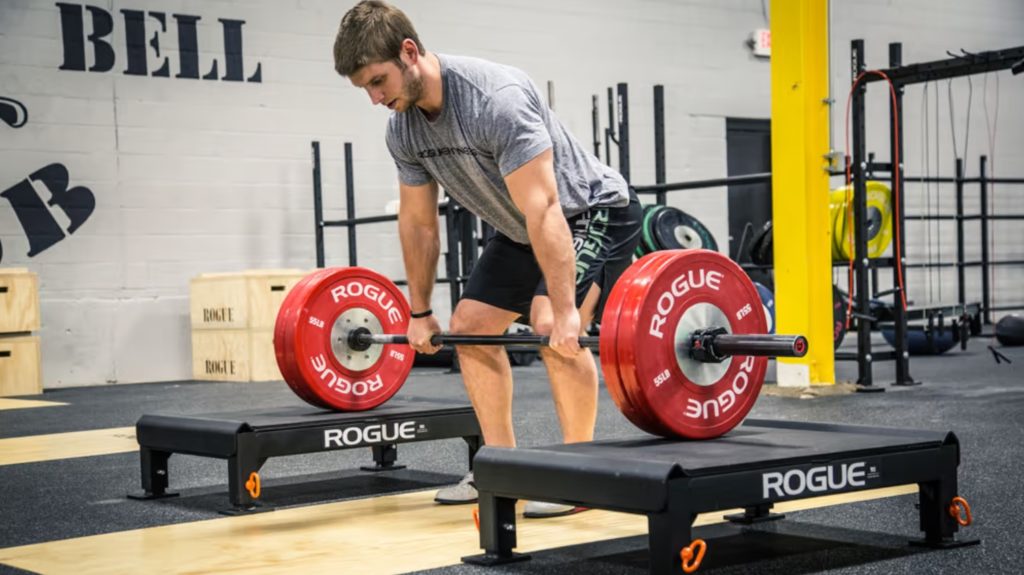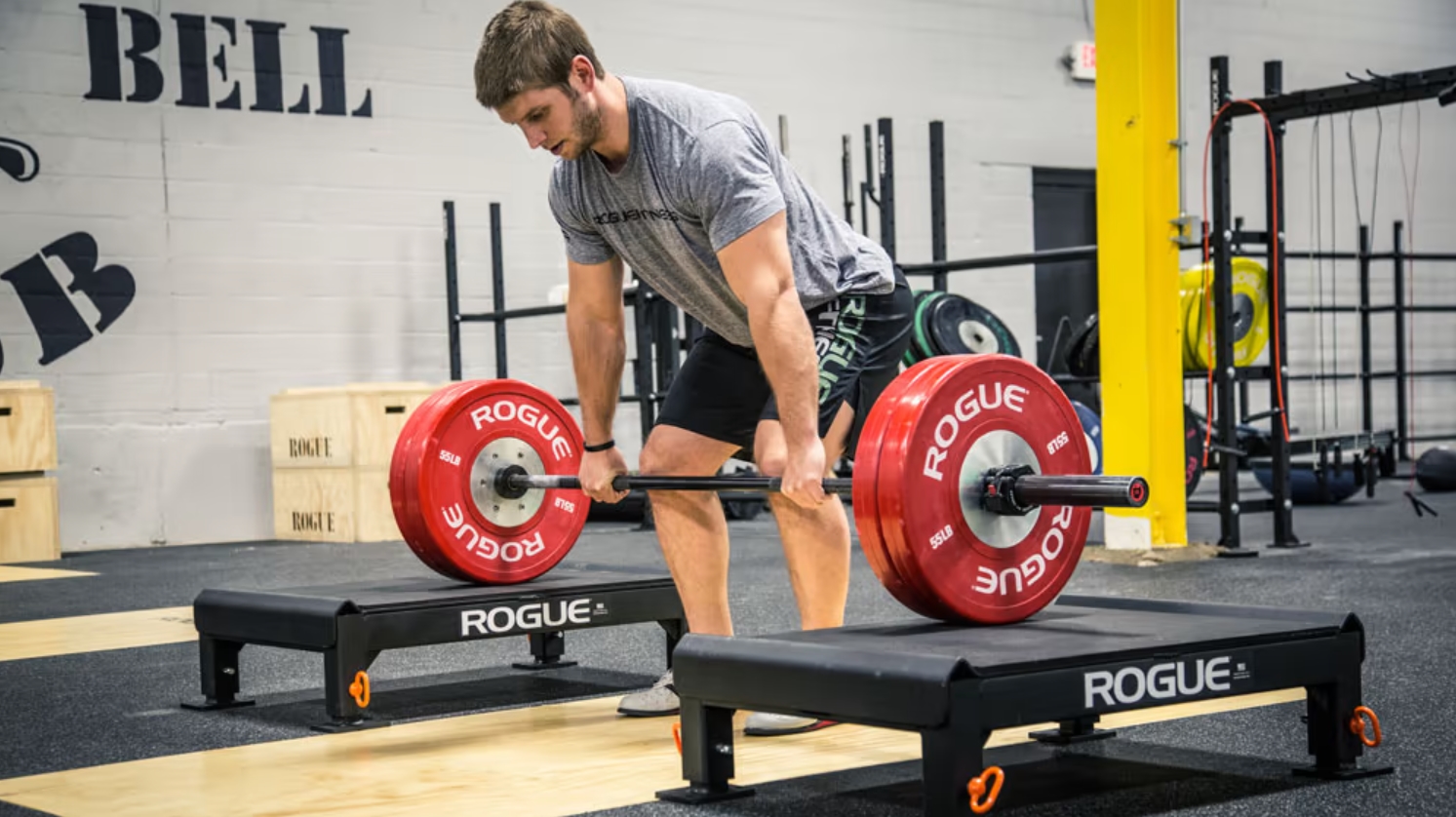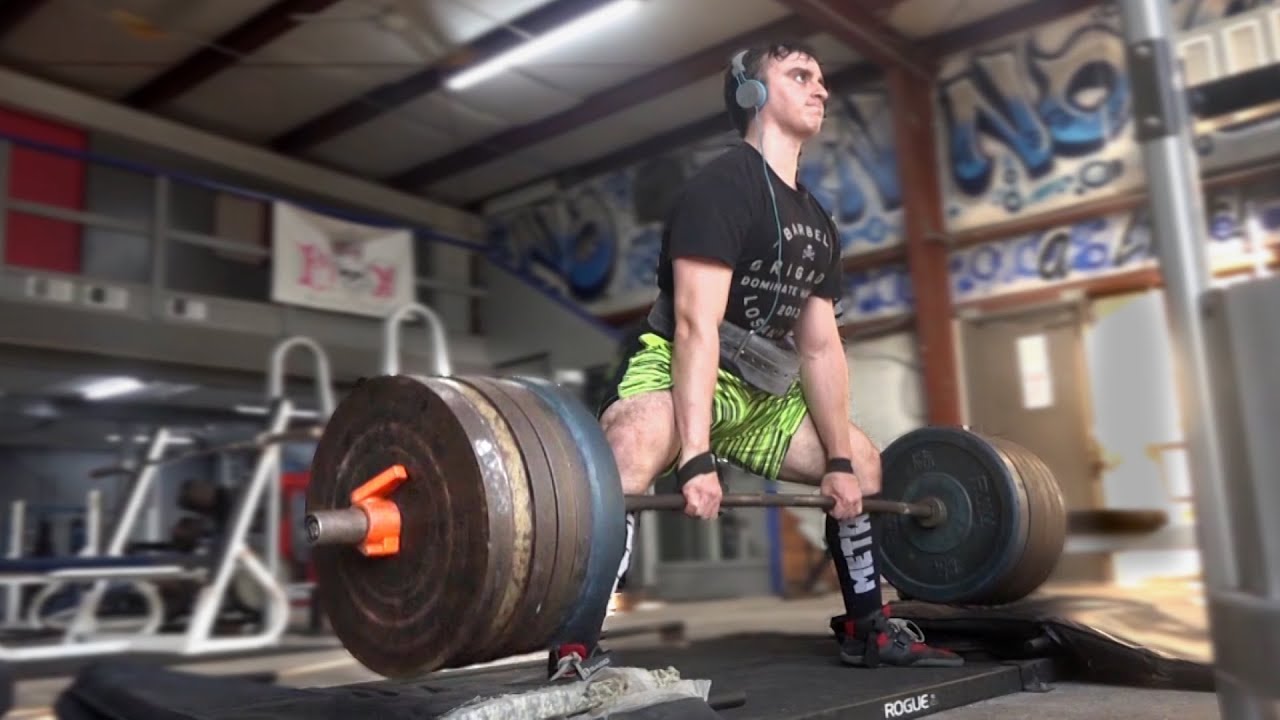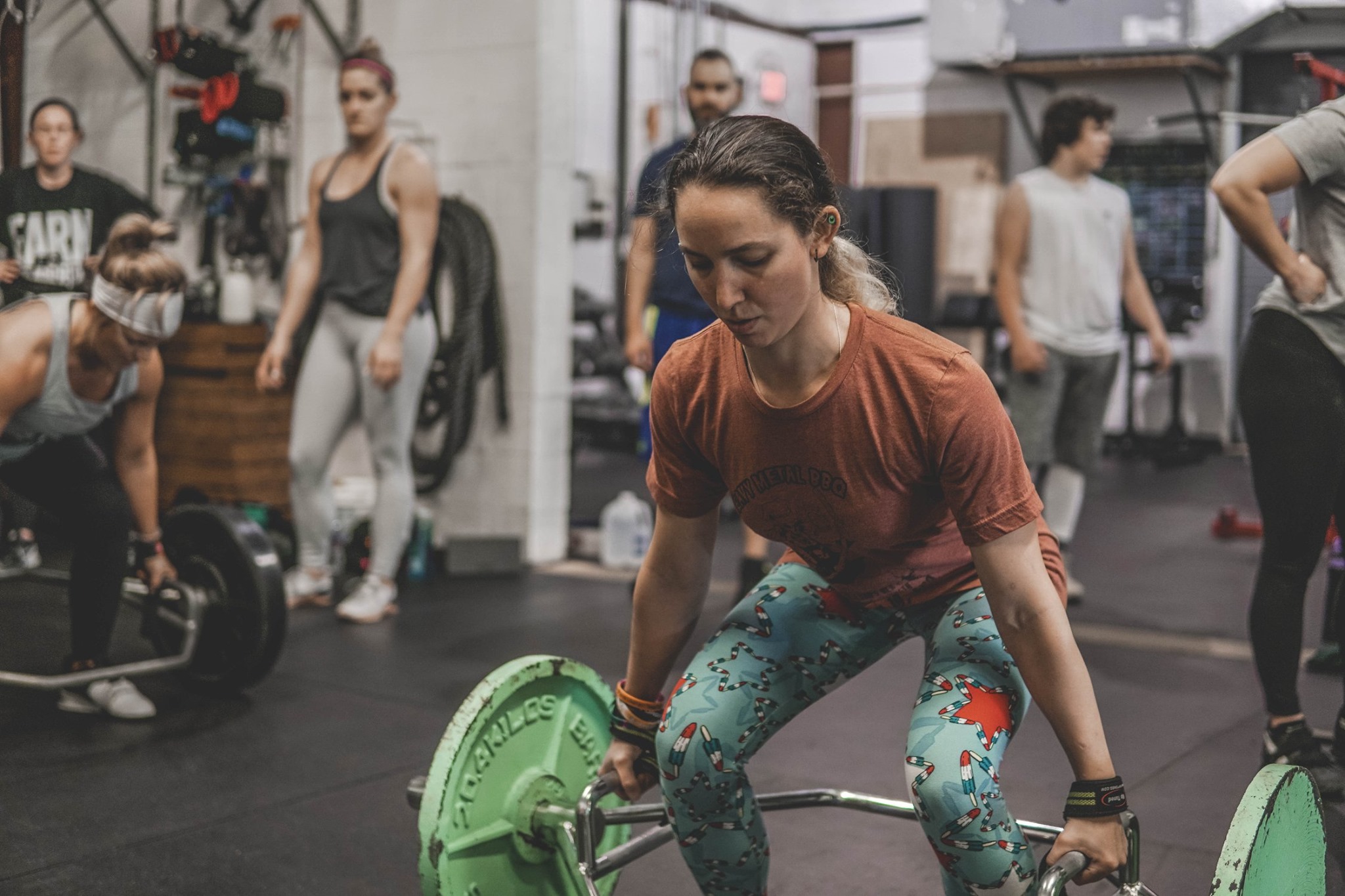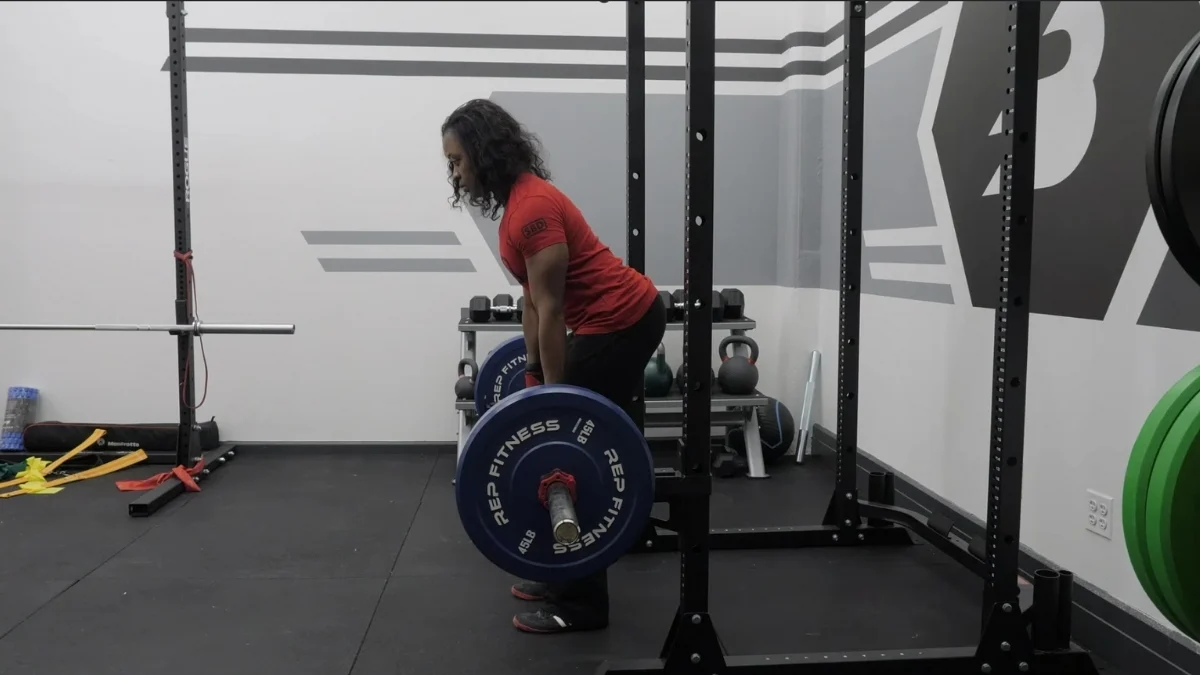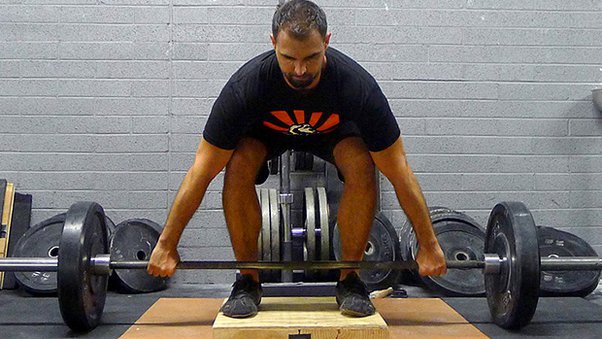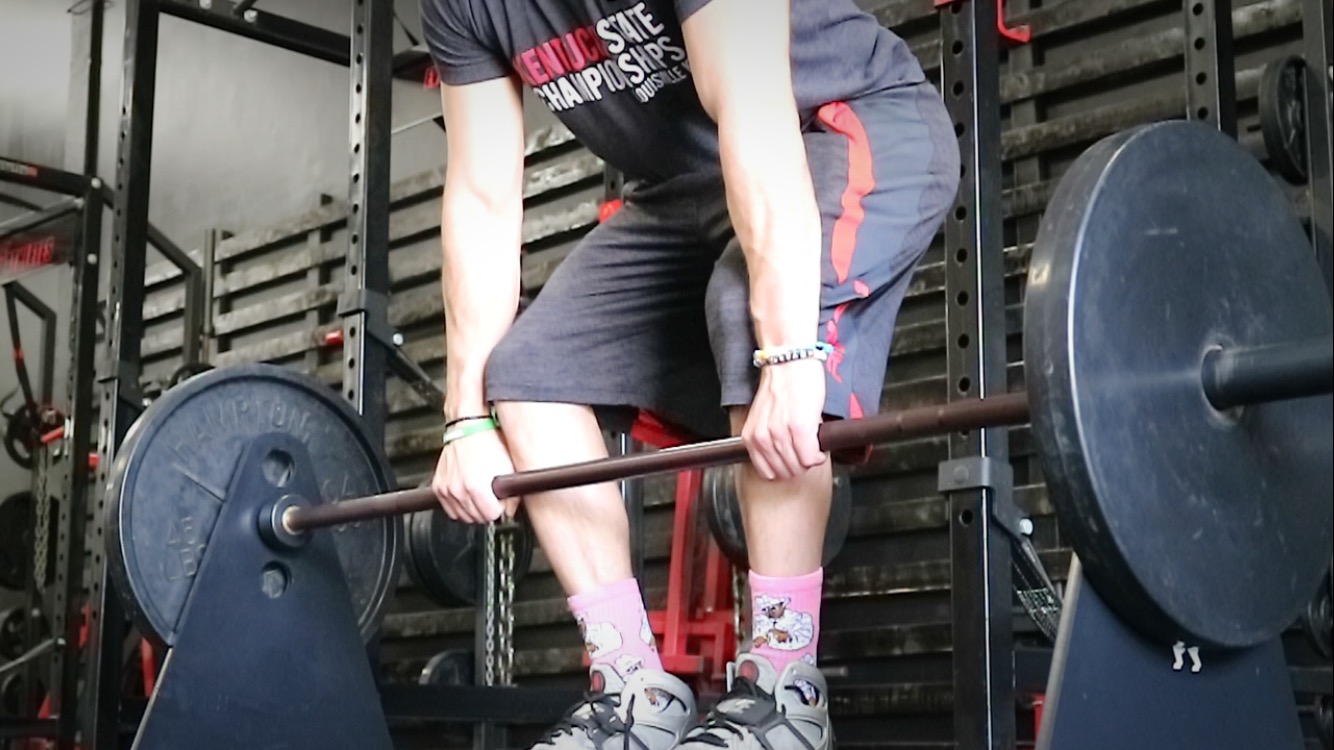As a powerlifting coach, there’s no more effective deadlift tool I can recommend to my students to develop strong deadlifts than the deadlift block.
What is the meaning of the block deadlift? The deadlift for the block is known as a “block pull” or “block pulls” or “elevated deadlift”. The barbell is placed on blocks near the knees of the lifter, which puts more emphasis on the lock-out portion during the deadlift. Block deadlifts are targeted at your glutes and upper back and trap muscles to a greater degree.
There are a variety of benefits of the deadlift block and I’ll go over them in this post. I’ll also offer step-by-step instruction on the deadlift technique with blocks as well as ways to prepare it if you don’t have access to blocks. In addition, you’ll need to learn how to program this exercise which is why I’ll give you examples of exercises that incorporate the pull of the block.
The Conventional Deadlift Block Pull Overview
The traditional deadlift with the block is a variation on the deadlift. It is a variation of the deadlift and an exercise designed to build your muscles around the glutes, hamstrings, and lats as well as the lower back muscles.
In reducing your range of motion as is the case with conventional deadlifts with block pulls it is possible to increase the force of the top of the move. This is particularly beneficial when you’re trying to build an even bigger deadlift but are struggling to lock it out.
Deadlifts with a block pull are typically used by powerlifters, but they are also beneficial to other groups seeking to build muscle as well. Let’s check it from the start position to all benefits of this move.
What are Block Deadlifts?
The block deadlift is among the most frequently used exercises for strengthening the upper range of the deadlift.
It’s classified as to be a partial range of motion since the lifter starts the exercise by placing the barbell on blocks. This implies that the barbell is placed at about knee height at times slightly higher or lower (explained in a later article).
Because of the limited mobility, emphasis is on lifting heavier weights when using a block deadlift than a normal deadlift.
It is typical to lift 10-30 percent more weight in the deadlift block for the same reps as for the standard deadlift. However, the specific percentage increase will be contingent on the point at which the barbell begins (below the knee above the knee higher than the knee) and also on how weak the lifter’s lock-out strength is.
The block deadlift if you regularly fall on a deadlift when you are in the upper-end portion of the deadlift. That is you’re not having any trouble lifting the bar away from the ground, however at about knee height, you are struggling to keep your shoulders and hips locked.
Conventional Deadlift Instructions for Deadlifts
- The bar is loaded onto the block or risers. Slack remains.
- Place the bar on the upper part of your shoelaces, and take a hip-width stance.
- Bring your hips forward and pivot to the side until you are on the floor.
- Grab the bar with your shoulder width, a double overhand grip.
- Inhale, slowly pull up on the bar, and allow your hips to lower in a swiveling manner. This is often described as “pulling the slack off of your bar”.
- When you lower your hips and lift them back up to the bar, make sure you set your barbells (imagine that you’re trying to squeeze the juice of orange through your elbows) and ensure that your armpits are directly above the bar.
- Push through your entire foot, and concentrate on moving your feet away from the ground.
- The bar should be with a smooth line while you stretch your hips and knees.
- Once you’ve locked your hips, reverse the motion by pushing your hips forward and bending them backward.
- Restore the bar on the ground, then reset and repeat the number of times you want to repeat.
Block Deadlift: Muscles Used
The muscle most commonly employed in the deadlift for the block is the glutes.
To understand the muscles utilized during the deadlift block it is important to know the way that the hips and knees are a part of the overall movement.
In the lowest mobility range, the main exercise can be seen in knee extensions. The muscle that is used to extend the knee can be found in the quads (for the majority of the time). From the knee’s level to the ground the quads are the ones that are tested most.
In the highest-end range motion, the most important action is the hip extension. The muscle responsible to extend the hip can be found in the glutes (for most of the time). So, from knee height to lock-out, the glutes are the muscles that are most challenged.
The muscles involved in the deadlift of the block include:
- Glutes
- Adductor Magnus (Inner Thigh)
- Low Back
- Mid-Back
- Spinal Erectors
- Traps
- Forearms (Grip)
Conventional Deadlift Block Pull Tips
- Proper technique of utilizing blocks lets you increase the top half of the motion range given the narrower movement range.
- The armpit’s crease over the bar and midfoot so that the bar moves linearly.
- A deadlift hinge is not an exercise like a squat. If you place your hips too low, you place yourself a poor biomechanically and reduce your ability to pull maximum weights.
- To stop the bar from slipping off the body to prevent it from moving away from the body, one must concentrate on squeezing their lats in order to keep the bar in the same place and let it move in a straight line. Make use of the cues: “squeeze oranges in your armpits”, “put your shoulder blades in your back pockets” (i.e. the scapular depression) or “imagine that you’re performing an arm straight pulldown”.
- Hips ought to be lower than shoulders, and you should be able to clearly see the name on the lifter’s shirt prior to them pulling (i.e. “chest up”). The chest up cue is typically used by locking the lats into place, however, this cue is usually not necessary if the person lifting knows how to start the lats.
- Neck posture is highly personal Some people prefer an unnatural neck position (i.e. not tucking the chin throughout the lifting) while others are comfortable looking slightly upwards. There are a few things to think about:
- If you’re more widely extended (i.e. an athlete) and you’re an athlete, then you’ll likely be able to maintain an upright posture more efficiently by packing your chin.
- At the other end of that spectrum is if you are inclined to be more inclined to flexion (especially in your thoracic spine upper back) then it’s best for you to take a moment to consider looking up because this can lead to further extension.
- Test each and discover which one best suits your unique physique and biomechanics.
- Ideally, you must cue and focus on the vertical shin, but it will all depend on the strength of the lifter’s spine and the length of his limb.
- Toe angle is a bit personal – it is based on the anatomy of your hip. Try different angles (toes slightly out, in, or in neutral) to find out which feels most comfortable for you.
- Do not retract your shoulders. It is not efficient mechanically and is an auto-limiting signal since it reduces the length of your arms which means that they require a wider range of movement.
- Be sure to put your fingers around the bar, and avoid using an unnatural grip. Press the bar as hard as you can in the same way as the bar is trying to make an impression of your footprints across the bars.
- Scraping the shins aren’t always required when doing the deadlift. It could happen more often when doing sumo than traditional exercise, but if you’ve got the armpits correctly in place (as mentioned above) and the bar will be moving vertically your shins should become horizontal and then move away from the way as the knees stretch.
- To add to my previous suggestion that if you concentrate on putting the entire weight on your heels, you’ll not have the ability to efficiently activate your quads at the beginning of the exercise, and consequently you’ll slow down the pace. Therefore, in order to overcome this, you must focus on driving through your entire foot. three areas of contact: the big toe, small toe, and the heel.
- Make sure that your elbows are in a locked position. Do not flex your triceps too much however, ensure that your elbow isn’t breaking into a neutral position, as this could expose you to an injury to your bicep while lifting heavyweights.
- Less experienced lifters might not require their “pull the slack from the bar” cue as much, and that’s okay as long as it is effective and permits them to lift the maximum weight. However, it’s essential to know and apply.
- For one-time repetitions, you’ll find it much easier to remove the bar out of lockout (provided you’re allowed to do so and you’re lifting on a platform or using bumper plates) because of less strain on the spinal erectors. But, for repeated repetitions, you must try to reduce the weight to a manageable level and not overload the erectors.
- The knees should be placed on top of the feet. If you set the feet too far (outside of the hip width) then you’ll likely be forced to choose one of two options:
- The knees will be pulled towards the back (valgus) because of the width of your grip.
- It is necessary to expand your grip, which requires more motion and can make the lift less effective.
- If you notice that you’re weak in lockout it’s best to include the rack pull with RDLs and/or pulls on chains or bands. On the other side of the spectrum in the event that you’re not strong off the floor, then you should consider incorporating paused and/or weak deadlifts. Also, you’ll require exercises for the glutes and the upper back.
Final Thoughts
Block deadlifts are a great alternative to work the top portion of the dead lift. I suggest incorporating the workout into your training program a few times a year without a sticking point and then increasing the intensity of the exercise over a period of 6-12 weeks. If you have trouble with the lock-out portion of deadlifts, you’ll be able to do Romanian deadlifts as well as banded deadlifts.
Look also – What Is A SDHP Crossfit?
Block Deadlift F.A.Q.
What is a block deadlift?
The deadlift for blocks is often referred to as “block pull” or “elevated deadlift”. The barbell begins with blocks that are placed at the lifter’s knees. This is more focused on the locking-out part that occurs during the deadlift. Block deadlifts focus on your glutes and upper back and trap muscles to a greater degree.
How tall should deadlift blocks be?
Block pulls are elevated deadlifts with sizes ranging between 1 to 6 inches in the height.
Are halting deadlifts good?
Stopping Deadlifts is an excellent second movement in these phases that can complement your deadlifts of choice if you’re struggling with particular weaknesses from the ground.
Are block pulls and rack pulls the same?
Block pulls have been regarded by professional lifters to be more efficient as compared to rack pulls (which are also raised) due to the fact that the bar is kept in the bar during the lift unlike rack pulls where the bar hits the rack and takes the slack off.

